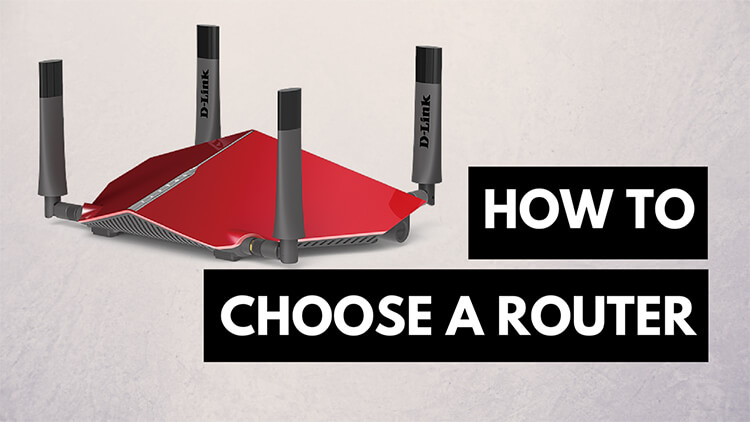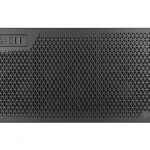Having a multiple gadgets and computers at home or at the office became a norm of our everyday life and usually we want all of them to be connected to the Internet, regardless whether they are mobile, like smartphone or tablet, or fixed, like desktop computer, gaming console or smart TV set. Not so long ago our modems were buzzing connecting to dial-up, today a huge number of users are using wireless technologies to connect to the Internet. In order to combine all the devices to a small network with ability to have shared Internet access, you would need to have a special device – router.
Most of us at home have wireless routers, and we could barely live without them. Sometimes the router will have an integrated modem to connect us to our DSL or cable internet, but for best performance it is best to have separate devices. Technically a home router combines the functions of several networking devices that would be separate in an enterprise setting, but we won’t bore you with the details.
Internet speed limits
In terms of hardware routers are lot like small computers – they also have a processor and memory and if the router has a more powerful processor and more memory, it can sustain more load. In the case of routers, load means bandwidth or the speed of your network. Usually, the routing speed is determined by the label at the bottom of the router and it would be best if it was greater than the speed of your internet connection.
For example, if your internet speed is 24 Mbps and your router has a maximum speed of 300 Mbps the real speed of the Internet connection would never be more that 24 Mbps, regardless of how you’re connected to the router – through the cable over Ethernet port of Wi-Fi. However, in reality speed could be even less due to other factors, such as number of the devices simultaneously utilizing the network, router Wi-Fi coverage etc.
Most households have internet speeds that are well below 100 Mbps. Ookla Speedtest, the most popular website for testing your internet speed, reports that the average download speed in the US is 34Mpbs as of March 2015. What this means is that for most people, the speed of your internet connection won’t be bottlenecked by your router, unless you’ve got a router that is more than ten years old. A high quality router is necessary for households with many devices, online gamers who want the lowest ping, or those lucky enough to have access to a fiber internet connection.
Wi-Fi standards supported by routers
Modern Wi-Fi routers can support multiple wireless speed standards that determine the connection speed between the router and wireless device. Today the following standards are commonly used in consumer routers:
802.11b
The first Wi-Fi connection supports bandwidth up to 11 Mbps. Uses unregulated radio signaling frequency of 2.4 GHz. Routers with this standard have lowest cost and good signal range that is not easily obstructed. Downside of this standard is slowest maximum speed and home appliances such as microwave ovens or cordless phones may interfere on the unregulated frequency band, so choosing a reasonable distance out of such devices when installing the router would be a number one priority. This is an older standard that is phased out, but may be found on some legacy devices
802.11a
Interestingly 802.11a came after 802.11b. It supports bandwidth up to 54 Mbps and signals in a regulated frequency spectrum around 5 GHz. This higher frequency compared to 802.11b shortens the range of 802.11a networks and have more difficulty penetrating walls and other obstructions.
802.11g
This standard combines the best of both 802.11a and 802.11b – supports bandwidth up to 54 Mbps and uses the unregulated 2.4 Ghz frequency for greater range. 802.11g is backwards compatible with 802.11b, meaning that 802.11g access points will work with 802.11b wireless network adapters and vice versa. 802.11g has fast maximum speed and good signal range is good that is not easily obstructed, however it costs more than 802.11b and wireless appliances may interfere on the unregulated signal frequency. This standard has been common since the mid-2000s and can still be found on many simple devices.
802.11n
Also known as “Wireless N” this standard is an improvement over 802.11g in the amount of bandwidth supported by utilizing multiple wireless signals and antennas – a MIMO (Multiple Input Multiple Output) technology, instead of one. 802.11n supports up to 300 Mbps of network bandwidth and offers somewhat better range over earlier Wi-Fi standards due to its increased signal intensity, and it is backward-compatible with 802.11b/g gear. 802.11n provides fastest maximum speed with best signal range and more resistant to signal interference from outside sources. Downsides of the standard – costs more than 802.11g and the use of multiple signals may greatly interfere with nearby 802.11b/g based networks. 802.11n was introduced in 2007 and is the most popular at the moment.
802.11ac
This is the new generation of Wi-Fi signaling that utilizes dual band wireless technology, supporting simultaneous connections on both the 2.4 GHz and 5 GHz Wi-Fi bands (MIMO/MU-MIMO). It offers backward compatibility to 802.11b/g/n and bandwidth rated up to 1300 Mbps on the 5 GHz band plus up to 450 Mbps on 2.4 GHz. There are two generations of 802.11ac standards that called Wave 1 that supports MIMO technology and Wave 2 that support MU-MIMO (Multiple User MIMO). The newest routers on the market support 802.11ac, but unless you also bought a new laptop that has it you won’t see much benefit. ASUS first started selling laptops with 802.11ac in mid-2012, while Apple sold their first MacBook with this standard in 2013.
As a common recommendation – don’t buy router with a built-in antenna since they have a weak amplification coefficient (up to 2dbi) and very limited coverage with limited speed. If the router has an external antenna (or several antennas in MIMO mode for 802.11n and 802.11ac standards) it would ensure a wide coverage range and maximum speed over Wi-Fi.
What is MU-MIMO technology?
MU-MIMO or Multi-User Multiple-Input Multiple-Output technology is expected to replace traditional, Single-User MIMO routers found in most environments today. Single-user MIMO devices operate by servicing one client at a time. When dealing with devices such as smartphones, tablets, or devices that otherwise aren’t demanding, the round-robin service provided through single-user MIMO is largely unnoticeable, but data-intensive applications such as streaming HD content or online gaming can cripple network performance, especially when multiple devices are using the network. MU-MIMO routers address this by interacting with multiple MU-MIMO capable devices simultaneously, eliminating the downtime present in the traditional round-robin approach.
Router ports
For home or small office use the speed of 100Mbps of the router’s Ethernet ports is usually quite sufficient for most tasks, but if you need more speed, for example, having NAS server within your network that requires as much access speed as possible, you’d better think of having the router that support 1Gbps speed, also known as Gigabit Ethernet. But there is a trick here – in order to utilize 1Gbps, your other devices (desktop computer or laptop) need to support it too, otherwise the router will be working at lower speeds for backward compatibility and having 1Gbps port will be useless.
Usually routers have only one WAN port for Internet connection from the modem. But if there is a need for two or more simultaneous Internet connections from different providers, routers that support Multi-WAN technology can be found on the market (DrayTek, for example), but they are quite expensive.
One of the very useful features of any router is the availability of a USB port. USB port allows plugging different devices that can be shared within the network: flash sticks and external hard drives as file-servers, 3G modems for having more than one Internet provider shared between the users, printers as print-servers in order to print documents from any device that utilizes the router.
Other features
IPTV – one of the recent features supported by routers. Allows to stream and watch digital broadcasting TV channels.
Shaper – feature that manages all traffic coming thought the router and shared with in all the users by optimizing or guarantee performance, improve latency, and/or increase usable bandwidth for some users by delaying the others.
Built-in torrent client – allows to download files directly from torrent servers through the router.
D-Link DIR-855L/R router
As a piece of advice, we would like to recommend this router due its remarkable features and outstanding performance.
D-Link 885L/R AC3150 Ultra Wi-Fi router is a dual-band router with MU-MIMO technology. It has a 1.4 GHz dual-core processor, 4×4 data streams, four high-powered antennas, and amplifiers and beamforming technology for extended and stable connections. Additionally, Smart Connect allows the DIR-885L/R to choose the clearest band available when connecting wireless devices. It has a router/extender switch, reset button, WPS button, a USB 3.0 port, four gigabit Lan ports, one WAN port, a power switch, and a power jack. The DIR-885L/R is compliant with 802.11b/g/n/ac protocols and possesses Intelligent QoS, which allows users to differentiate and prioritize network traffic. If offers an impressive 1000 Mbps on 2.4 GHz and 2167 Mbps on 5 GHz, reaching just over 3150 Mbps, which allows users to easily handle multiple data intensive applications simultaneously.









there way to change lan ports to wan ? (at 4 wan and 1 lan) example with linksys wrt3200ac ?
Thanks for sharing these useful considerations…!!